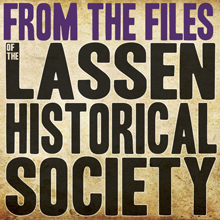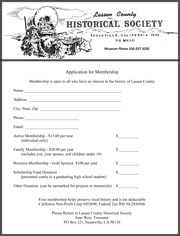

by Susan Couso
Through the efforts of some civic minded people in our nation’s northeast, Camp Fire Girls was incorporated in 1912 to act as a sister organization for the Boy Scouts of America.
Camp Fire Girls was created to encourage girls to experience the outdoors and to learn leadership, responsibility, confidence, and civic involvement. It promoted environmental education, cooperation, keeping a healthy body and exploration of ideas.
Family involvement was key to the success of the Camp Fire Girls, and an understanding of the lore and values of our Native People was an important part of the Camp Fire Girls program. As the organization grew, their meetings highlighted Native culture and Native dress was worn for ceremonies.
In later years, this ceremonial dress was changed to encourage Camp Fire members to express their own culture, and members could wear a kimono, kilt, or other clothing to show their heritage.
It was a delightful organization and soon began to grow to a reported 60,000 members by 1913, and this year the first official Camp Fire Girls Handbook was published. This year also saw the creation of the Bluebird program for younger girls. The small groups, camps and after-school activities made participation a fun and easy experience.
These civic-minded girls worked to sell over one million dollars-worth of Liberty Bonds and over $900,000 in Thrift Stamps to raise money for the WWI war effort. Their 50th Anniversary was marked by Camp Fire Girl groups planting more than two million trees, building 13,000 bird houses and many other projects to support our environment.
In 1975 boys were admitted as members and the organization was renamed “Camp Fire Boys and Girls” to reflect the change. The group emphasized working together and understanding differences, and the addition of boys into the program brought new cooperation and ideas into an already successful atmosphere.
In 1938 Mrs. Mary Parks, with four daughters of her own, organized Aowakiya Camp, the first Camp Fire Girls group in Susanville, and its twenty-six members met in local homes.
Almost immediately Gwedonlyn Jensen formed the Cheskchamay Camp with another twenty-six girls, and both groups were supported and sponsored by the PTA.
With rapid growth the meeting locations were overcrowded, and the local spiritual community responded. The Aowakiya began to meet at the Baptist Church and the Cheskchamay met at the Methodist Church.
Still overcrowding was an issue as the number of girls continued to swell. Takima Camp, sponsored by the Tommy Tucker Post of the American Legion was soon added, and then came Osowehtahl Camp and Wahelo Camp in 1939. These three camps met at the Veterans Memorial Building.
Later, in 1939, Yazude Camp, sponsored by Dr. Clarence Burnett, was formed.
The girls continued to be extremely active in local civic matters, participating in numerous events to help their community. At the same time, they worked to promote the Camp Fire Girls lifestyle and values.
In 1940, Dr. Burnett donated his land across from the cemetery at the ‘top’ of Court Street, to be used for the construction of a cabin, and the community came together once again to help with the cause. The land, with a value of around $2,000, was just the beginning.
Soon, Camp Fire Girls and their families joined in a concerted effort to raise funds to build their cabin. By the spring of 1941, over 175 Susanville residents, (whose names all appeared in the Advocate) had donated $300. By May, 500 residents had given $500. The Smart Shop clothing store donated 10% of its sales to the girls, and other donations continued to flow in.
In May, five ‘Camp Fire fathers’ began work building the foundation. With help from the 20-30 Club and Rotary, they tore down an old barn on the property and reused the lumber for construction. Hundreds of community members and local merchants also donated whatever they could to the project.
In June, a roof-raising party was held, and the hopes and dreams of hundreds of people, young and old, were nearing reality.

The girls got to work collecting rocks to build the impressive fireplace and most could point out their rocks for years to follow. Finishing of the cabin continued for several years as funding became available. In 1950 Christie Furniture installed the unique Camp Fire design on the floor and the local council then had something that no other Camp Fire Council had.
Membership of the Susanville Camps swelled to 292 girls in 1962, and in 1976 the Susanville Camp Fire Council was the only council in the U.S. to show an increase in membership greater than 10%.
But, as with many great things, hard times were ahead. Membership began to decrease. By 1981, membership was down to only sixty-three members. The loss of membership was blamed, in part, on a lack of leaders.
In 1995 measures were taken to involve the Northern California Camp Fire Council in Redding to help ease administration of local Camp Fire holdings. The NCC then held title to the cabin and property with the local Camp Fire Council paying utilities and administrative costs each month.
By 1998 the NCC, facing financial insolvency, had merged with the Eureka Council. The Eureka Council then faced financial burdens of their own and used the little cabin as collateral for a loan. The bank holding title to the cabin was never repaid by the Eureka Council and decided to put the property on the market to ease their losses.
It came as a complete surprise to local Camp Fire members when the sale of the Camp Fire cabin showed up on real estate listings.
The bank was contacted, and they agreed to let the Susanville Camp Fire Council have the cabin, if they paid off the debt. This was an insult and an outrage to the local Camp Fire supporters who had, through massive community involvement, raised the funding to build the cabin and maintain it for the previous 56 years, and a “Save the Cabin” campaign began.
Salvation came from Lassen County officials who stepped in to help. They contacted the National Headquarters for Camp Fire in Kansas City, Missouri and explained the situation. The National Camp Fire officials graciously agreed to pay off the loan to the bank and return ownership of the cabin to local officials. But they needed someone to take proprietorship of the property and ensure that it would be secured for the future.

Lassen County stepped in to take on this role and accepted the title to the property, insisting on deed restrictions to protect ownership. The deed restrictions state that if the Camp Fire Council is not active, other groups may use the cabin, but they must not remove the historic Camp Fire items in the cabin.
The cabin can be used by other organizations, mainly youth organizations, with Lassen County permission. The now dormant Camp Fire Council will always have first ‘dibs’ on their cabin and may become active at any time with enough support from the community.
Until that time, the little cabin sits and waits for the Camp Fire kids to return.

If you are a fan of our weekly history stories you should join the Lassen County Historical Society! It’s a fun way to be a part of our county’s rich history. When you sign up, you’ll receive regular Historical Society newsletters with interesting stories and information. Membership is open to anyone with an interest in area history.
Through your membership you help preserve local history. You can download a membership application by clicking here.





